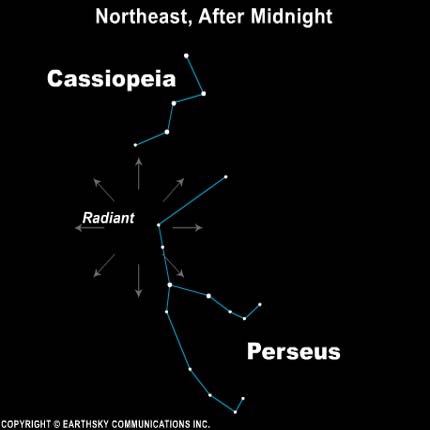Image may be NSFW.
Clik here to view.
Clik here to view.

In this stunning photograph we see the Perseids meteor shower as observed from the Snowy Range in Wyoming. The photograph was taken the night of August 11th, 2012, by professional photographer David Kingham. The Perseids are a prolific meteor shower associated with the comet Swift-Tuttle. The Perseids are so-called because the point from which they appear to come, called the radiant, lies in the constellation Perseus. The stream of debris is called the Perseid cloud and stretches along the orbit of the comet Swift-Tuttle. The cloud consists of particles ejected by the comet as it travels on its 130-year orbit. Most of the dust in the cloud today is around a thousand years old. However, there is also a relatively young filament of dust in the stream that was pulled off the comet in 1862. The shower is visible from mid-July each year, with the peak in activity being between August 9 and 14, depending on the particular location of the stream... Perseids are primarily visible in the northern hemisphere. [Source: Wikipedia]
***
2013 Perseid Shower
The 2013 Perseid meteor shower will actually happen at the same time as a waning crescent moon which will produce favorable viewing opportunities. There are predicted to be anywhere from 80 to 100 meteors per hour.
On Aug. 11 and 12, the moon is going to set before midnight. That will provide darker skies for viewers and better chances to see more meteors.
Depending on where you are in the world, the number of meteors to be seen will range between 20 to 120 per hour.
Tips for best Perseid viewing experiences:
- Find an unobstructed area free of structures.
- Get away from city lights.
- Avoid telescopes and binoculars as they will limit your vision.
- Once settled in a spot - a blanket and pillows are recommended - look toward the northeastern sky.
- Try to locate the constellation of Perseus as the meteor shower will be in that general direction.
- Do not look straight up into the sky.
- Be patient. If the night is clear and light pollution limited, you should see your first meteor within 5 minutes. Sometimes you will see five or more in a sixty second span.
Image may be NSFW.
Clik here to view.
Clik here to view.

In order to know the best times and locations to see the Perseid meteor shower, per your location, can be difficult to know. Check out SpaceDex.com as it gives a viewing guides for all 50 of the United States along with hundreds of countries and provinces for times and more.
Remember. This year's Perseid Meteor Shower promises to be a fine spectacle.
Don't miss it!
Don't miss it!

